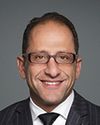I thank you for that question.
I think the second part of your suggestion is important, that we wanted to show to the Syrian refugees that Canada welcomed them.
When the Prime Minister—and not so much me—went to the first plane and welcomed the refugees as new Canadians to their new home, that photograph went around the world. People everywhere in the world saw it. I remember going to Jordan, where I met a group of refugee children at a UNICEF place. Those refugees knew nothing about Canada and their families had not applied to come here, but they came up to me and said, “Oh, I see your Prime Minister welcomed us Syrians at the airport.”
Whereas other countries are closing their doors or making it tougher, I think one of the things we as a country are doing is welcoming people. I think that photograph of the Prime Minister of our country at the airport welcoming refugees sent a message around the world.
For me, it was something I wanted to do, because it was something we had all been working on very hard and we were also starting to see the fruits of our own labour when the first group of refugees arrived, first in Toronto and then later in Montreal. I also spoke to quite a number of refugees at the airport in Amman when they were leaving to come here.





